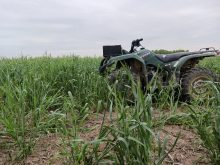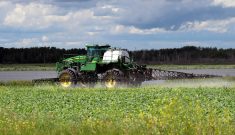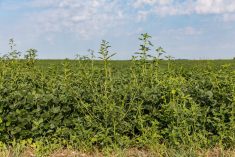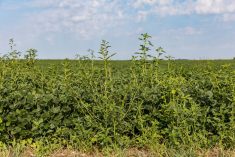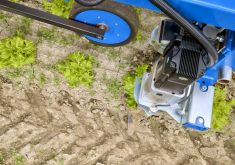Kerr Farms was presented with a challenge by one of the buyers for its conventional carrots: could they grow them organically?
Nature’s Finest, a major Ontario supplier of root vegetables to supermarkets, had a request for more organic carrots from retailers. Kerr Farms already grew some crops organically, says Bob Kerr, but carrots proved a significant challenge.
Why it matters: Weed control cost and labour availability limit the ability to grow some crops with reduced or no herbicides.
Read Also
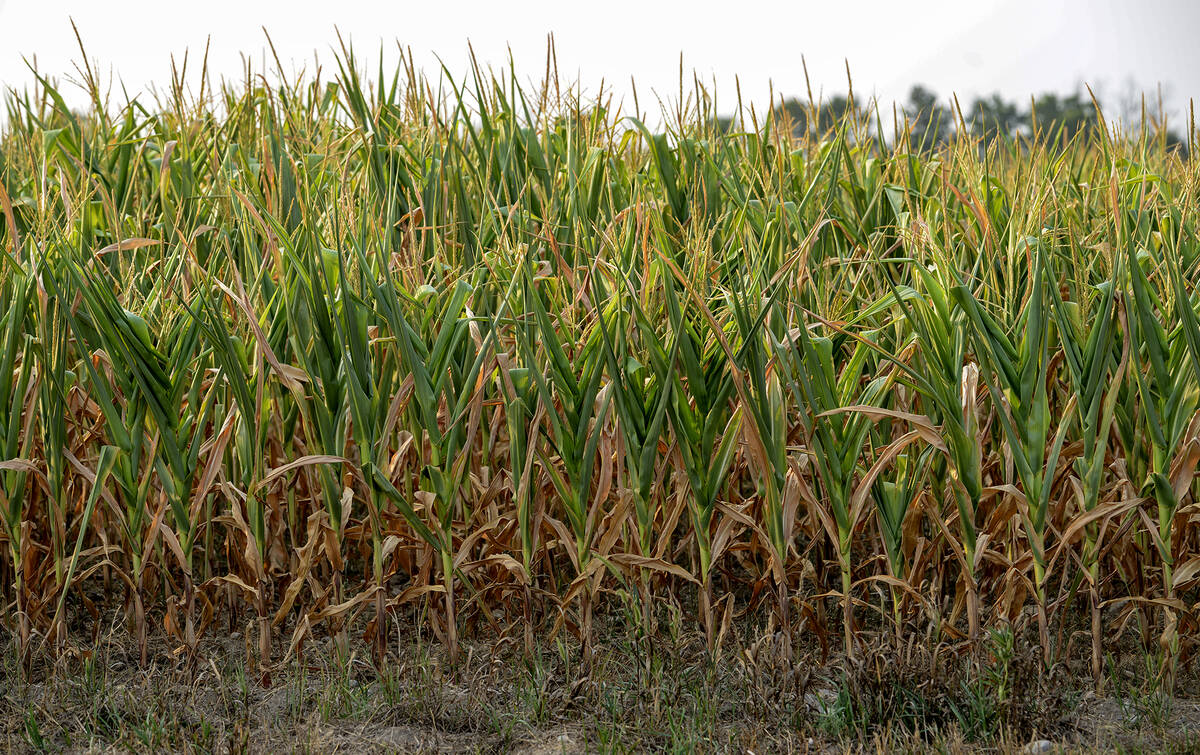
Extreme variability marks Ontario’s 2025 corn crop
The yield potential of Ontario’s 2025 corn crop was lost in some areas due to extreme dry conditions.
The fine carrot plants are challenged by weeds and are difficult to hoe manually, even if growers can find the skilled labour to do so.
Kerr said they tried methods like leaving weeds and carrots to grow and then mowing them all off closer to harvest, but nothing worked well.
PHOTOS: Here come the crop robots
That’s when his business partner, Dave Hunter, who now owns and runs the business with Kerr as the landlord, suggested they try the Carbon Robotics LaserWeeder.
Carbon Robotics was a new U.S. company that aimed to control small weeds by zapping them individually with lasers. Kerr Farms now uses a laser weeder as part of an integrated weed management strategy to protect the high-value carrot crop.
VIDEO (above): Chuck Baresich of Haggerty AgRobotics stands behind the LaserWeeder during a demonstration in a carrot field at Kerr Farms Ltd. on May 25, 2023, near Bothwell, Ont. Video: Kristy Nudds
It’s not fast, as severe weed pressure of 40 to 50 weeds per square foot means the Massey Ferguson 7S.165 tractor moves at about 0.1 or 0.2 kilometres per hour through the fields. When the weather is good and machines are running, Jack Orr, a Scottish agriculture university student working this summer for Kerr Farms, says they have four operators who run the weeder 24 hours per day in the carrot fields, creeping and zapping as they go.
“It has made our crops much, much cleaner. As great as a person is, when they are walking up and down the field with a hoe, they take a lot of weeds out, but they take out some carrots as well,” says Orr.
“It can be a soul-sucking job at times because it is very, very, very slow.”
Orr and an agronomist have compared carrots with different passes of the LaserWeeder, including one area with one less pass that resulted in differences in carrot size and yield.
Kerr says the LaserWeeder isn’t the only weed-control tool used. A flamer is used on the field before the crop emerges, and after the LaserWeeder, a weed zapper is used to electrocute weeds that are taller than the crop. Finally, staff lie on tables on an implement pulled by a tractor and they reach down to pull whatever weeds are left.

This is an extraordinary amount of cost just to manage a crop, but as Kristen Obeid, weed management specialist for horticulture with OMAFRA points out, carrots are expensive to keep free of weeds whether conventionally or organically.
She used the example of a 140-acre carrot farm, where herbicide-resistant weeds are a challenge and the crop is sprayed about five times per season. Operations would then also use hand weeding, which would cost $1,000 to $1,200 per acre or $320,000 on 140 acres for hand weeding alone, not including herbicide costs.
The LaserWeeder at Kerr Farms is 20 feet wide and is called the Slayer. It’s powered by the front PTO on the tractor and an electrical umbilical that runs down the side of the tractor.
There are 42 cameras below the deck on the LaserWeeder, says Jeff Vander Voort of Carbon Robotics, 12 of them for prediction that draws a map of the plants they see. That information is run instantly through a computer model that can identify 50 different types of crops and almost 300 different weed types. Extraordinarily bright lights illuminate the crop under the platform so the cameras can work day and night.
The information is fed to the 30 targeting cameras, each with a laser, which target the weeds for frying.
Weed size matters. Vander Voort says if a weed doubles in size, it quadruples the length of time it takes the laser to kill it.
Fabricating shop lasers have been reconfigured with servos added for movement. The lasers shoot at mirrors, which target the individual plants on the ground with an accuracy of one millimetre.
The lasers burst the cell walls of the plant and vaporize the water, halting plant growth. The plants then break down in about 72 hours.
During a recent tour, the demonstration didn’t happen in the field because the area just outside of Chatham received 6.5 inches of rain the previous weekend.
However, the Carbon Robotics team threw wood chips and business cards onto the ground and moved the weeder over it. Lasers hit each of the targets.
The machine continues to get better, says Obeid. Each data point, whether it’s related to the time of day or type of crop or type of weed, helps it get better and quicker.




